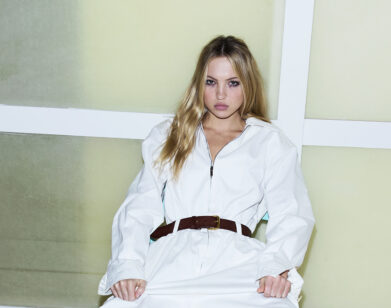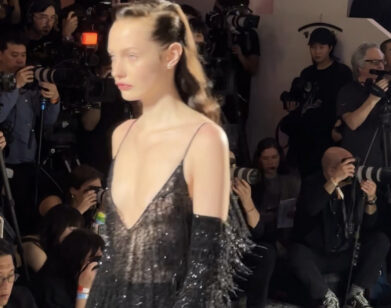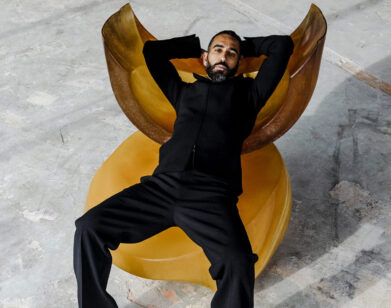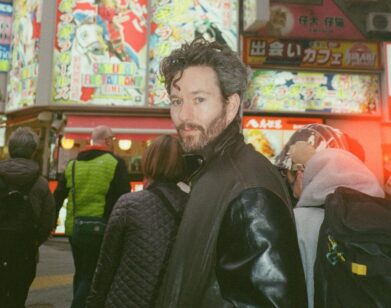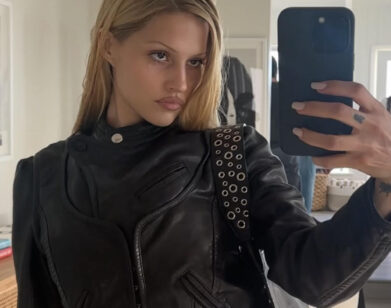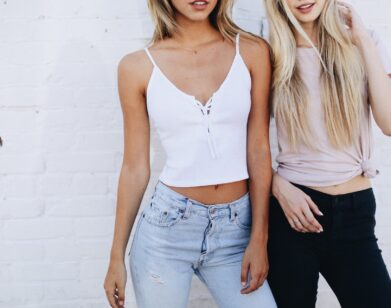Berlin Fashion Week Gets Sensible
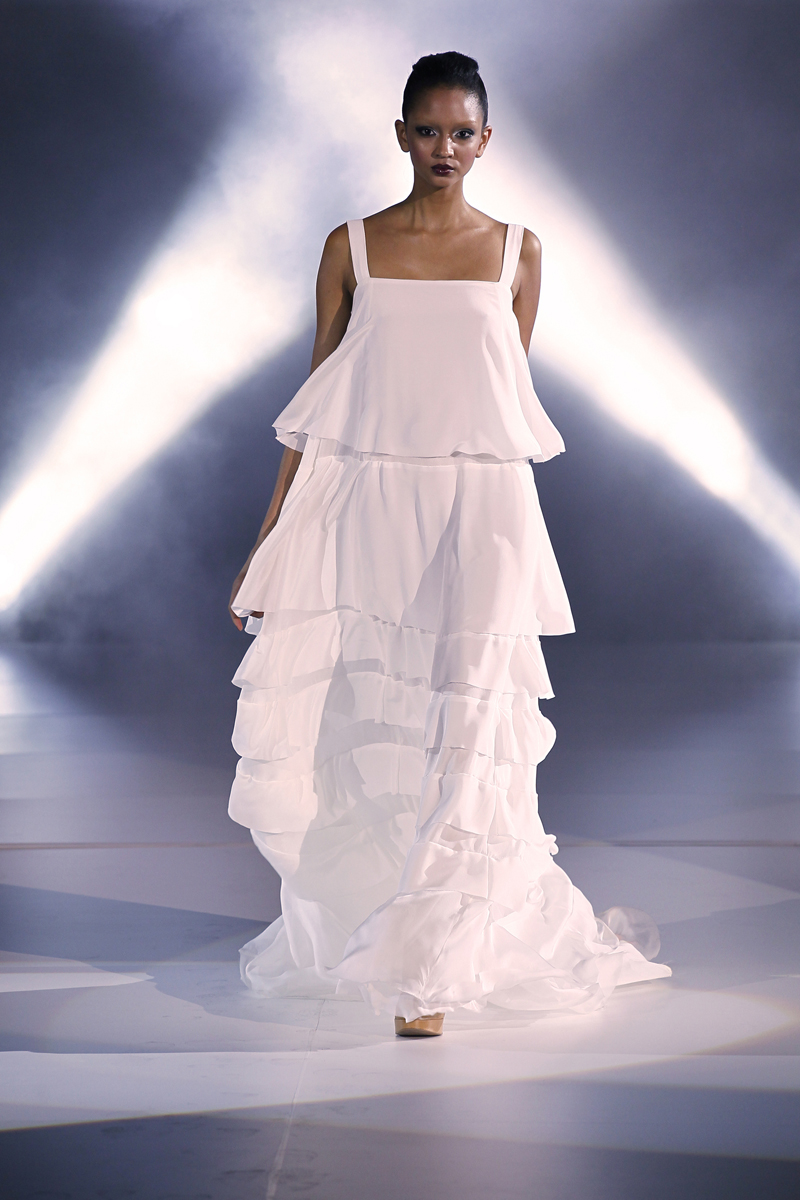
BERLIN FASHION WEEK SPOKESMODEL KAROLINA KUKOVA (LEFT); A LOOK BY PATRICK MOHR (RIGHT). ALL PHOTOS COURTESY OF MERCEDES-BENZ FASHION WEEK BERLIN
Berlin Fashion Week isn’t Milan or Paris the way Merkel isn’t Berlusconi or Sarkozy. Fashion insiders love drama and artistry, but on an everyday level it’s important to know that practical concerns are getting due consideration. This season, Berlin Fashion Week abandoned its ambitions of competing with the European heavyweights, or replicating the magnitude of its own intense art scene, to focus on practical, attractive, and salable design. Even designers known for their raw aesthetic or shock tactics presented pragmatic collections in the Bebelplatz main tent.
Vladimir Karaleev, the young Bulgarian-born and Berlin-based designer, in particular made his base of Berlin’s edgier editors proud with his tenth Nirvana-inspired sculptural collection, “Principles of Disarrangement”—his first in the official Mercedes-Benz Bebelplatz tent instead of an art-oriented off-site venue. The collection featured long navy wool dresses, deconstructed oversized camel-colored coats, and loosely constructed garments inspired by grunge girls. And Patrick Mohr proved that there’s no need for antics—previously: transsexual body-builders in clown-costumes and homeless, mentally ill models—by presenting a saleable stream of shapeless sportswear without the theatrics. Mohr makes conventional denimwear (such as a baggy, ill-shaped black shell on a male model and a girl wearing a conservative black pair of trousers and dress-shirt or floppy tan harem pants) wrapped in histrionics.
LOOKS BY RENA LANGE (LEFT) AND MICHAEL MICHALSKY
Hugo Boss was, as usual, the highest-profile show. Freja Beha Erichsen and Berlin Fashion Week spokesmodel Karolina Kurkova both walked. And this season, the show matched the hype, with a range of elegantly cut, polished, black, white and lacquer-red garments.
Berlin-based Michael Michalsky presented a universal and very attractive collection, which sincerely appealed to potential wearers ranging across the spectrum of ages. Titled “Urban Nomads,” the pale, draped and layered collection inspires a Yohji Yamamoto-esque dream of flowing pale fabric, ideal for his strong Asian market. While a number of other shows referenced the Charlie Girl image of the 1970s, Michalsky actually resurrected the real appeal of the era with an appearance by pioneering model Pat Cleveland. She was joined by a multi-generational crew of powerful faces, including Kristen Owen, who wore a plum-colored sleeveless top adorned with a spray of pink and purple rhinestones.
Kaviar Gauche’s gorgeous show of caramel and black draped goddess gowns, cut to expose small glimpses of skin around the midriff, a black halter jumpsuit, and PVC tee-shirts paired with white lace pencil skirts, pushed a sophisticated, hardcore sexuality. Even Berlin’s creatively rich but financially strapped milieu shows signs of budding growth, with new shops sprouting up in Mitte and Kreutzberg. The opening of a long-awaited boutique for local favorites Don’t Shoot the Messengers, as well Happy Shop (a.k.a: Opening Ceremony’s new Berlin little sister?) and Voo’s concept stores creates bright hubs for young talent all year around.

